Ask about our healthy drain program!
Blog
Drain My Yard
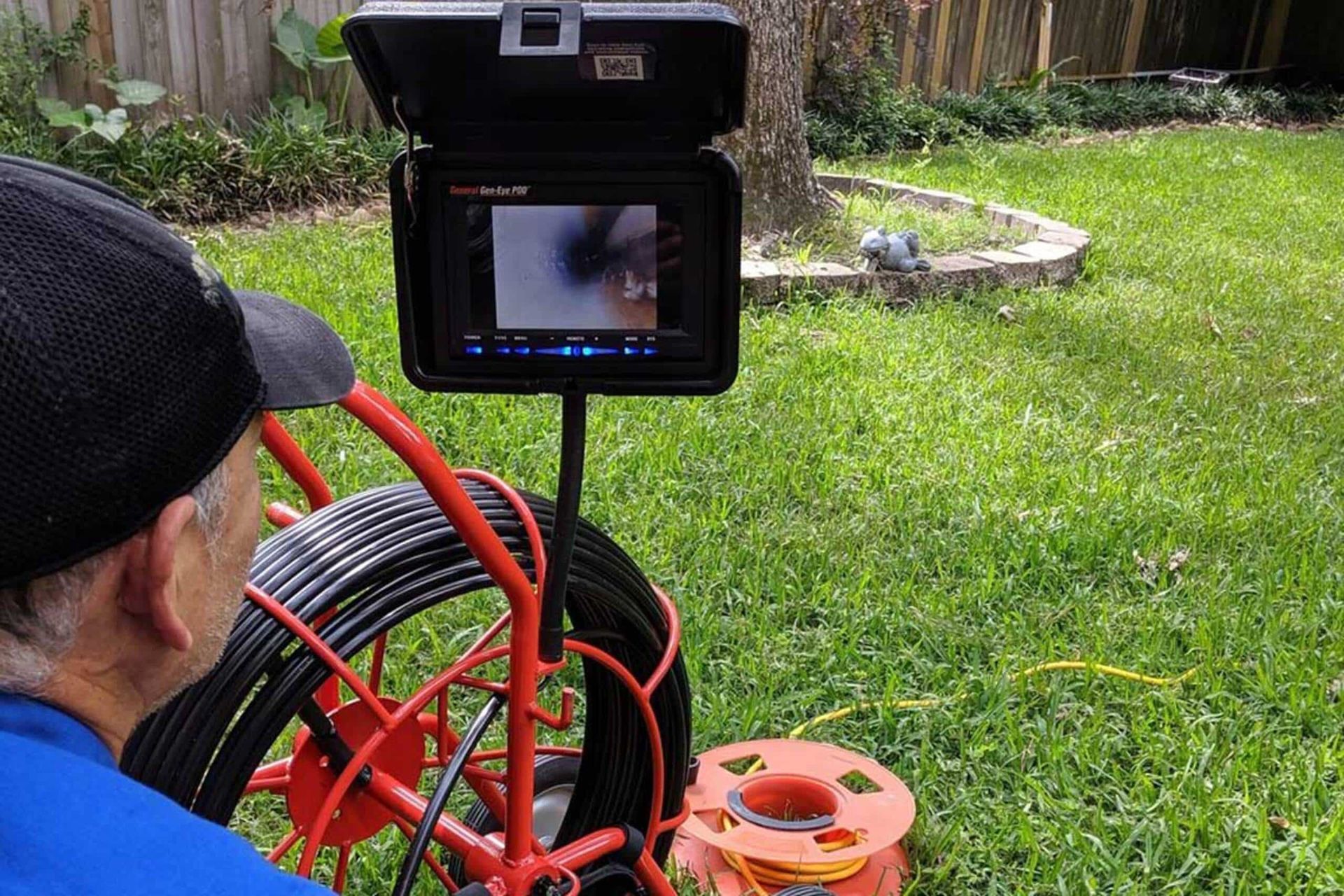
February 7, 2025
Why You Should Get Your Exterior Drains Checked with a Camera Scope Today, let's dive into a topic that often goes overlooked but can save you a ton of headaches down the road: checking your exterior drains (i.e., downspouts, surface drains, sump pump drain, etc.) with a camera scope. You might be wondering, “What’s the big deal?” Well, let me break it down for you. First off, the main benefit of this service is that it provides you with video proof of how your drainage system is functioning (or not functioning!) You get to see exactly what’s going on down there, and trust me, it’s worth it! You’ll not only find out whether your drains are draining correctly, but you’ll also learn where those drains go and how they’re connected to one another. This is invaluable information that most property owners don’t have, and it can really come in handy when issues arise. At Drain My Yard, we call this our Healthy Drain Program. If snow melt or rain leads to a puddle forming in your yard, the last thing you want is to be left in the dark about what’s causing the problem. By having your drains inspected, you can take proactive measures before things get out of hand. That camera scope can spot potential issues before they escalate—like a broken pipe or a serious clog—allowing you to address them effectively. Or, the camera scan gives your drainage pipes a clean bill of health! Additionally, when you have this service done through our Healthy Drain Program, you’re also given a map of where all your drain pipes are located on your property. This is a game changer, especially if you ever need to do yard work or before digging for any reason. Knowing where your pipes are can save you from accidentally damaging them, which could result in costly repairs. In the unfortunate event that you do have a broken pipe or a stubborn clog, you now have precise information at your fingertips. You’ll know exactly where the issue is, which allows you to determine the best course of action for repairs. Whether you handle the fix yourself, or you call in Drain My Yard, having that knowledge makes all the difference. So, if you haven’t had your exterior drains inspected with a camera scope yet, now’s the time to consider it! You’ll equip yourself with the peace of mind that comes from knowing your drainage system is functioning correctly—and if not, you’ll know exactly what needs to be done. If you'd like to schedule a drain inspection or if you have any questions, feel free to reach out to Drain My Yard at 330.678.9554. Let’s ensure your drainage system is ready to handle whatever Mother Nature throws at it! Remember, a little preventive maintenance goes a long way in protecting your home. Happy draining!
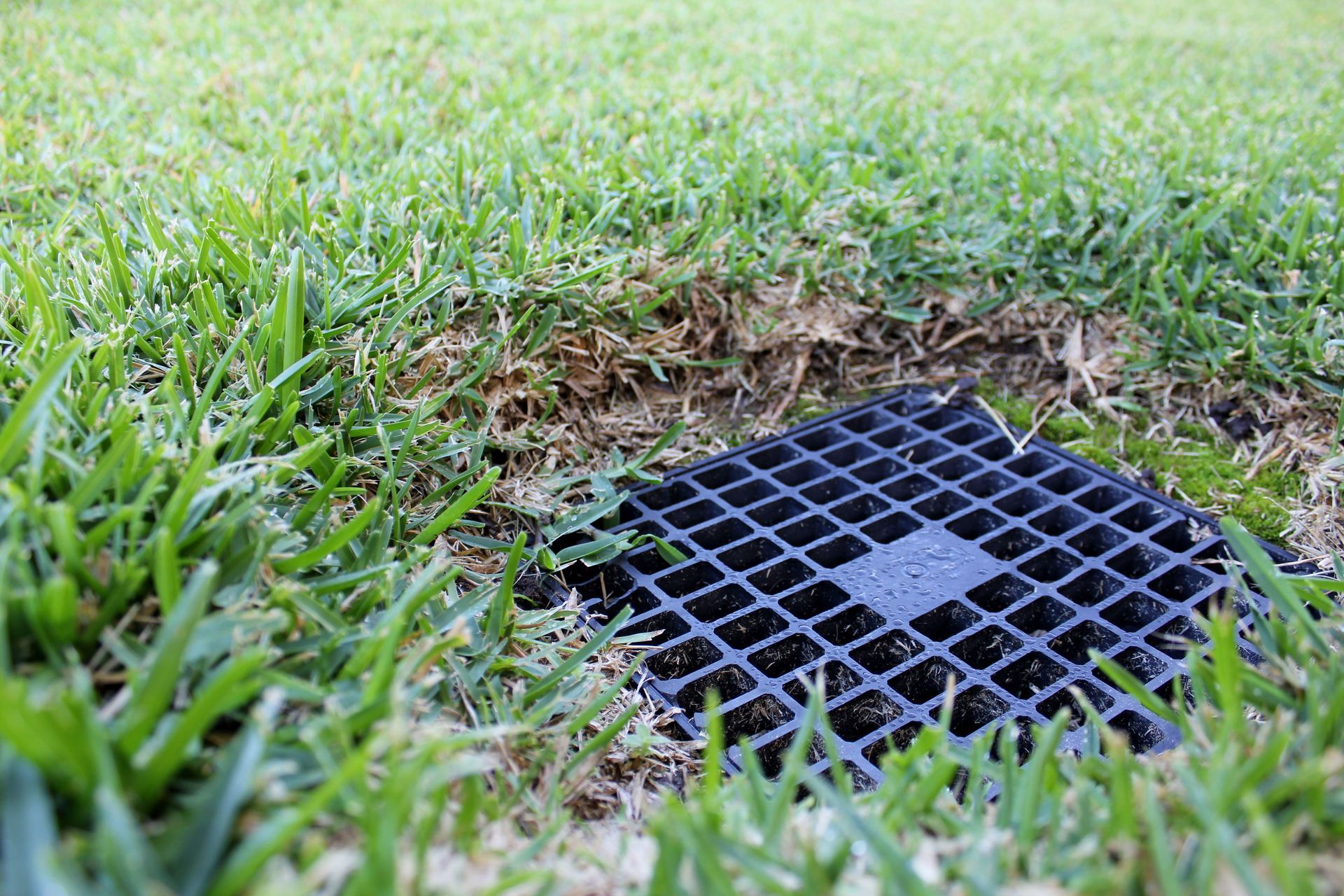
January 17, 2025
When it comes to maintaining a home, understanding the roles of various professionals can make a big difference. Two services you might find yourself needing are plumbing and/or yard drainage professionals. While they both serve crucial functions, they operate in distinct areas of expertise. Plumbers: The Complex Problem Solvers Plumbers are the go-to experts for all things related to indoor plumbing. They handle everything from leaky faucets and clogged drains to installing new water or drainage systems. Their specialty lies in tackling complex plumbing issues that require a deep knowledge of water systems, appliances, and local plumbing codes. Yard Drainage Companies: The Outdoor Specialists On the other hand, if you're facing drainage issues in your yard, a yard drainage company is your best bet. These professionals focus on outdoor drainage solutions, such as downspouts, French drains, and yard surface drains. Their work ensures that water moves away from your home/foundation, preventing flooding and water damage. Not only do they handle the installation of these systems, but they also repair any damaged landscaping (lawn, foundation beds, etc.) in the process. Additionally, they take the aesthetic qualities of the solution into consideration to ensure that the “fix” doesn’t detract from your yard and landscaping. In summary, when deciding between a plumber and a yard drainage company, consider your specific needs. If your issue is inside your home or requires connecting to main city lines, reach out to a plumber. However, if you're dealing with external drainage problems, a yard drainage specialist will have the tools and experience you need to keep your yard and landscaping dry and healthy. Understanding the difference between these two types of professionals can save you time and lead to better results. Whether you're dealing with plumbing issues or yard drainage dilemmas, knowing who to call can make all the difference in maintaining your home. If you have any questions or need recommendations, feel free to connect with the team at Drain My Yard and we’ll guide you in the right direction.
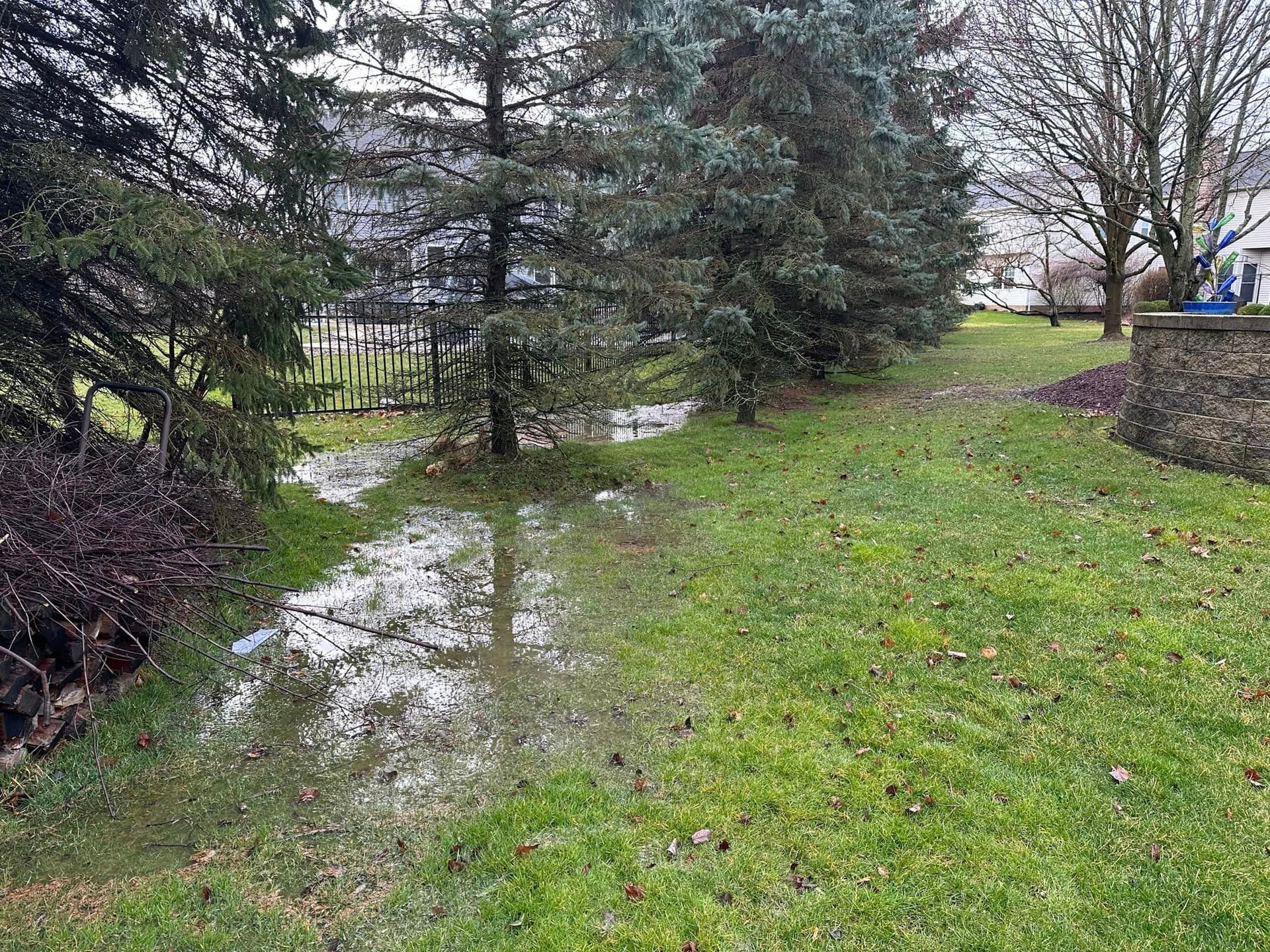
January 13, 2025
As a homeowner in Northeast Ohio, you may have experienced the frustration of dealing with a soggy yard or unsightly puddles after a rainstorm. It’s more than just an inconvenience—it can affect your lawn's health and lead to bigger issues if left unaddressed. In this blog post, we will explore the reasons behind this persistent problem and discuss effective solutions to help you reclaim your yard. Why Is My Yard Soggy? There are several factors that contribute to soggy soil and puddles in your yard: Soil Composition: The type of soil in your yard greatly influences its drainage capability. Clay soils, for instance, tend to retain water due to their compact structure, which makes it difficult for water to percolate through. Topography: The landscape of your yard matters too. If your property is located in a low-lying area or has an uneven terrain, water can naturally accumulate, leading to puddles. Rainfall Intensity: Northeast Ohio is known for its variable weather, and heavy rainfall can overwhelm drainage systems, leading to temporary standing water. Landscaping Features: Trees, shrubs, and other landscaping elements can block water flow, preventing proper drainage and leading to soggy conditions. Improper Grading: If your yard isn’t graded correctly, it can create areas where water collects rather than drains away. Solutions to Soggy Yards Now that we understand the reasons behind the sogginess, let’s look at some effective solutions to mitigate this issue: French Drains: Installing a French drain can significantly improve drainage in your yard. This involves creating a trench filled with gravel and a perforated pipe that directs water away from the problem areas, allowing for better water management. Surface Drains: For more immediate water removal, surface drains can be installed at low points to collect excess water. These drains help channel the water away from your yard, preventing collection and promoting a drier environment Proper Grading: If water is pooling due to improper grading, regrading your yard can provide a long-term fix. Ensuring that your yard slopes away from your home and other structures will encourage water to flow naturally to designated drainage areas. Soil Aeration: Aerating your soil can improve its ability to drain. This process involves perforating the soil with holes to allow air, water, and nutrients to penetrate more deeply, which can help alleviate compaction issues. Establishing Rain Gardens: Consider creating a rain garden with native plants that thrive in wet conditions. This not only beautifies your yard but also helps absorb excess rainwater. Dealing with a soggy yard can be discouraging, but understanding the underlying causes is the first step toward finding a solution. By implementing strategies such as French drains, surface drains, and proper grading, you can enhance your yard's drainage and create a more enjoyable outdoor space. If you’re considering these solutions and need expert assistance, do not hesitate to reach out to Drain My Yard —your yard deserves it!
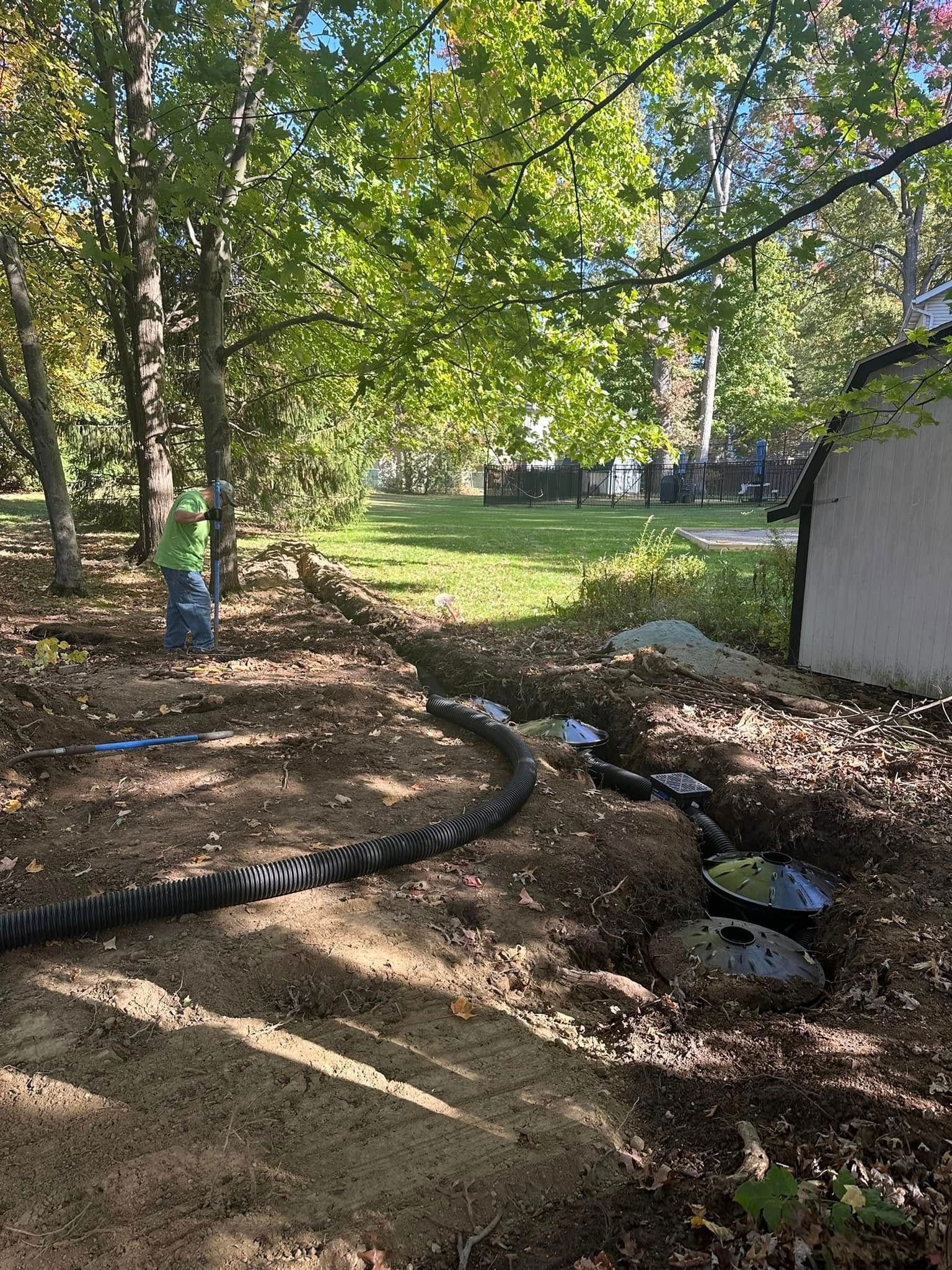
January 13, 2025
For homeowners in Northeast Ohio, dealing with a soggy yard can be more than just an eyesore; it can lead to more significant issues like property damage and increased maintenance costs. One effective solution that many homeowners turn to is the installation of a French drain. This article will introduce you to what a French drain is, its benefits, and how it can be a crucial part of a comprehensive drainage solution. What is a French Drain? A French drain is a type of drainage system designed to redirect water away from specific areas of your yard, helping to prevent flooding and water accumulation. Basically, it consists of a trench filled with gravel, rock, or other bulky material that contains a perforated pipe at the bottom. This setup allows excess water to flow into the pipe, which then carries it away to a designated drainage area, such as a storm sewer or dry well. How Can a French Drain Help Your Yard? Redirects Excess Water: A primary advantage of a French drain is its ability to channel excess water away from areas prone to saturation, thereby preventing water from pooling in your yard. This is particularly beneficial during heavy rains, common in Northeast Ohio. Improves Soil Quality: Soggy yards can lead to soil erosion and nutrient loss. By helping to manage water flow, a French drain can contribute to healthier soil conditions, promoting better plant growth in your garden and yard. Foundation Protection: Water accumulation around your home can lead to serious foundation issues over time, including cracks and structural damage. A well-installed French drain intercepts and redirects water away from the foundation, safeguarding your home. Enhances Curb Appeal: A saturated lawn often leads to unsightly muddy patches (and muddy paw prints!!!) and an unkempt appearance. By resolving drainage issues, a French drain can contribute to a more attractive outdoor space, improving your property’s curb appeal. A Supportive Part of a Larger Drainage Solution While a French drain is an effective standalone solution, it's important to note that it works best as part of a broader drainage strategy. For many Northeast Ohio homeowners, this means considering other drainage solutions like surface drains, downspout extensions, and/or dry wells. Combining a French drain with these systems can offer a comprehensive approach to managing water flow. For instance, properly placed gutter downspouts can help direct rainwater away from your home, while surface drains collect and redirect water pooling in low areas of your yard. By harmonizing these methods, you can create a well-rounded drainage solution that minimizes the risks associated with excess water. Is a French Drain Right for You? If you find yourself battling a soggy yard each spring or after heavy rains, it may be time to consider installing a French drain. The team at Drain My Yard can help you assess your property’s needs and determine the optimal drainage solution. We can provide valuable insights into placement, design, and any additional systems that may be beneficial. In conclusion, a French drain can be a practical and effective way to alleviate your soggy yards, especially when integrated into a larger drainage management plan. By taking proactive steps, you can protect your property, enhance its appearance, and enjoy your outdoor space to the fullest.
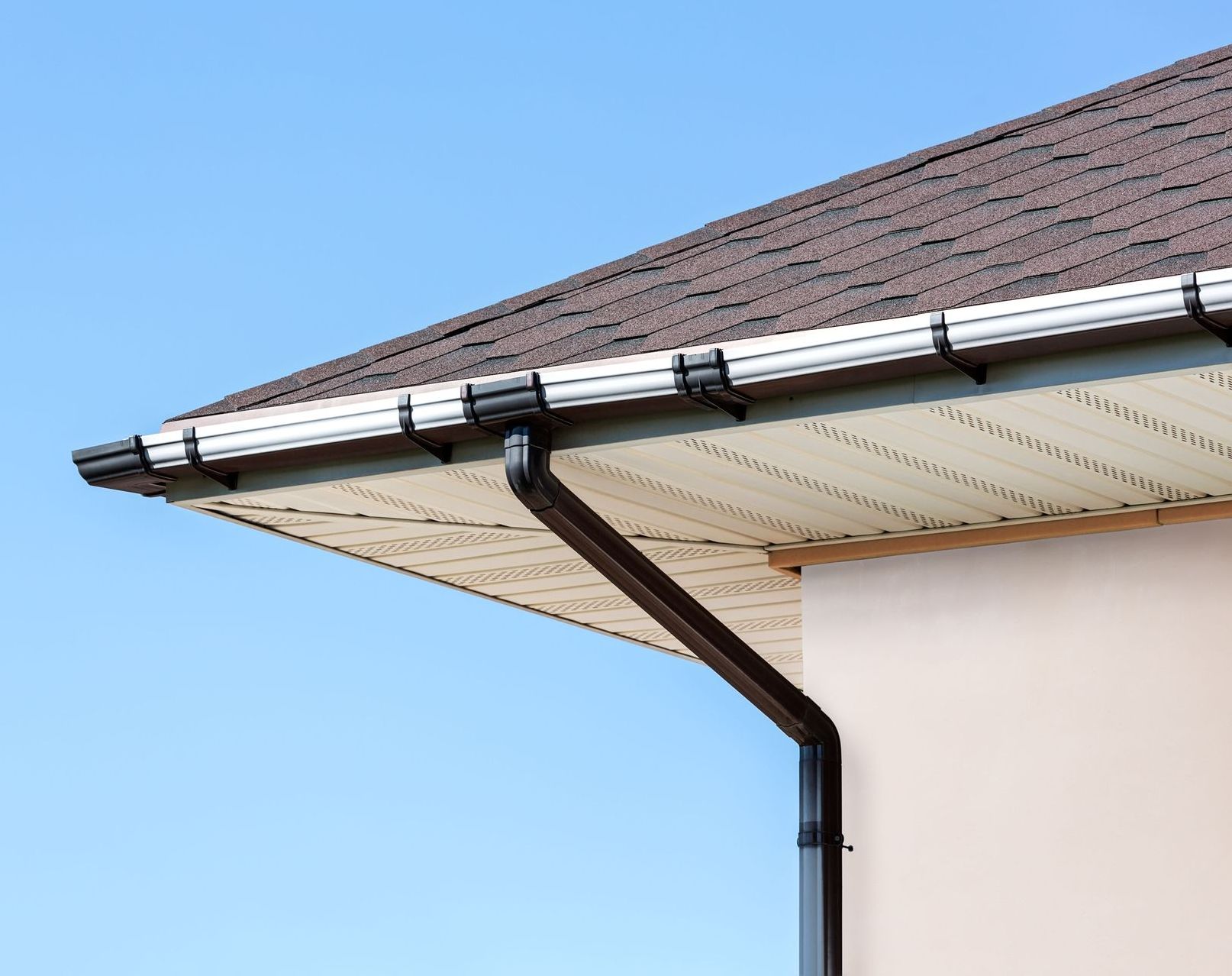
January 13, 2025
As homeowners in Northeast Ohio, we know that our area experiences a unique mix of weather, from heavy rainstorms to deep winter snows. While we love the changing seasons, these extremes can pose significant risks to our homes, especially when it comes to water management. One often-overlooked aspect of home maintenance that is crucial for protecting your foundation is the inspection of downspouts and sump pump drains. First and foremost, let's discuss why these components are so important. Downspouts divert rainwater away from your roof and foundation, while sump pumps work tirelessly to remove excess water from your basement or crawl space. Both are designed to protect your home from water damage and structural issues. However, regular inspections are necessary to ensure they are functioning correctly. One of the key reasons to inspect your downspouts and sump pump drains is to prevent clogs. Over time, debris such as leaves, twigs, and dirt can accumulate, leading to blockages. A clogged downspout can cause water to overflow, pooling around your foundation. This stagnant water increases the risk of seepage into your basement, which can lead to mold, mildew, and even the deterioration of your home's structure. Similarly, if your sump pump is not draining properly, it may fail to remove water effectively, putting your basement at risk. In addition to potential clogs, inspecting your drains can help identify other issues that could lead to costly repairs down the road. For instance, check for any signs of wear or damage to the downspouts or sump pump discharge pipes. Cracks or misalignment can all hinder the proper flow of water, allowing it to accumulate where it shouldn’t. An annual inspection can help catch these problems early, allowing for timely repairs that can save you money and hassle. The frequency of these inspections should ideally be at least once a year, with additional checks after heavy storms or during seasons of increased precipitation. During your inspection, the team at Drain My Yard ensures that your downspouts are correctly draining away from the foundation. If the downspouts or sump pump drain discharges at surface level, a minimum distance of five to ten feet is often recommended to direct water far enough away from your home. If needed, we can install extensions on your downspouts. Using camera technology, the team at Drain My Yard can perform a comprehensive examination of your drainage systems, ensuring everything is in working order. We will also provide valuable advice tailored to the specific soil and weather conditions in Northeast Ohio, helping you make informed decisions about your home maintenance. In summary, maintaining your downspouts and sump pump drains is essential for the overall health of your home. Clogs and breakdowns can lead to water pooling against your foundation, potentially causing significant damage over time. By taking the time to inspect these critical drainage systems and addressing any issues that arise, you can protect your investment and help ensure your home remains a safe and comfortable haven for you and your family. So, take a moment this season to check on those drains; your foundation will thank you! If you have any questions about your drainage system, don’t hesitate to contact the team at Drain My Yard today to discuss your concerns.

By 7002328015
•
January 3, 2025
When the snow falls and the ground hardens, lawn care may seem like a task to postpone until spring. However, for homeowners in Northeast Ohio, winter presents a unique and advantageous opportunity to address persistent drainage issues. Tackling these problems during the colder months not only prepares your lawn for a healthier growing season but also helps you avoid potential property damage caused by improper water flow. Why Address Drainage Issues in Winter? 1. Visible Problem Areas: During winter, snowmelt and occasional rain can reveal drainage problems more clearly than in other seasons. Standing water, icy patches, and uneven melting patterns are key indicators of poor water flow. These signs make it easier to identify areas that need attention. 2. Reduced Lawn Activity: With grass growth dormant and outdoor activities at a minimum, winter provides a low-traffic window to perform necessary excavation or adjustments without worrying about damaging the active turf or disrupting regular yard use. 3. Preparation for Spring: Addressing drainage issues in winter ensures your lawn is ready for the heavy rains of spring. Proper drainage promotes a healthier lawn by preventing soil erosion, water pooling, and root rot, all of which can lead to costly repairs if left unchecked. Common Winter Drainage Solutions • Grading and Sloping: Reshaping the land to direct water away from structures and prevent pooling in low spots. • French Drains: Installing perforated pipes surrounded by gravel to channel excess water away from problem areas. • Dry Wells: Creating underground reservoirs to collect and slowly disperse excess water into the soil. • Soil Aeration and Amending: Improving soil composition to increase its absorption capacity. • Rain Gardens and/or Rainscaping: Designing landscaped areas to capture runoff and encourage natural filtration. Tips for Homeowners in Northeast Ohio 1. Monitor Snowmelt Patterns: Take note of areas where snow and ice linger or where water tends to pool after a thaw. 2. Consult Professionals: Enlist the expertise of local drainage specialists familiar with Northeast Ohio’s unique climate and soil conditions. 3. Act Early: Start planning in early winter to ensure projects are completed before spring rains arrive. 4. Consider Long-Term Solutions: Investing in proper drainage now can save you time and money in the future by reducing the need for frequent repairs and minimizing potential water damage to your property. A Healthier Lawn Starts in Winter While winter may seem like an unlikely time for outdoor projects, it’s the perfect season to resolve lawn drainage issues. By taking action now, you’ll not only protect your property but also set the stage for a vibrant, healthy lawn come spring. Northeast Ohio homeowners who prioritize drainage solutions during the colder months can enjoy peace of mind knowing their lawn is equipped to handle whatever Mother Nature brings next. Contact Drain My Yard at 330.678.9554 to discuss your lawn drainage issues today.
Learn More About Drain My Yard
Serving the Northeast Ohio area, Drain My Yard specializes in French drains, downspouts, and sump pumps. Free estimate within 2 days. We consult with you. Certified NDS-installer. Call us.
serving Area
Hudson, OH
Stow, OH
Business Hours
- Mon - Fri
- -
- Sat - Sun
- Closed
Hi. Do you need any help?
Privacy Policy
| Do Not Share My Information
| Conditions of Use
| Notice and Take Down Policy
| Website Accessibility Policy
© 2025
The content on this website is owned by us and our licensors. Do not copy any content (including images) without our consent.

Share On: